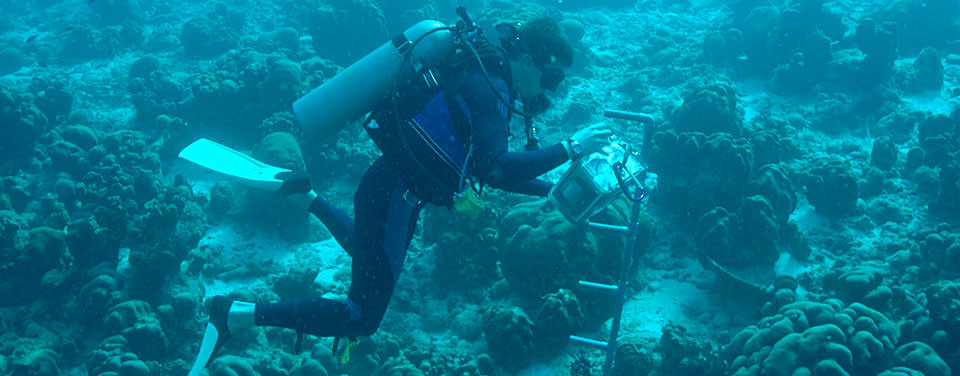What does an oceanographer do?
An oceanographer studies the ocean.

Several thousand marine scientists are busy at work in the United States dealing with a diversity of important issues — from climate change, declining fisheries, and eroding coastlines, to the development of new drugs from marine resources and the invention of new technologies to explore the sea.
Oceanography covers a wide range of topics, including marine life and ecosystems, ocean circulation, plate tectonics and the geology of the seafloor, and the chemical and physical properties of the ocean.
Just as there are many specialties within the medical field, there are many disciplines within oceanography.
Biological oceanographers and marine biologists study plants and animals in the marine environment. They are interested in the numbers of marine organisms and how these organisms develop, relate to one another, adapt to their environment, and interact with it. To accomplish their work, they may use field observations, computer models, or laboratory and field experiments.
Chemical oceanographers and marine chemists study the composition of seawater, its processes and cycles, and the chemical interaction of seawater with the atmosphere and seafloor. Their work may include analysis of seawater components, the effects of pollutants, and the impacts of chemical processes on marine organisms. They may also use chemistry to understand how ocean currents move seawater around the globe and how the ocean affects climate or to identify potentially beneficial ocean resources such as natural products that can be used as medicines.
Geological oceanographers and marine geologists explore the ocean floor and the processes that form its mountains, canyons, and valleys. Through sampling, they look at millions of years of history of sea-floor spreading, plate tectonics, and oceanic circulation and climates. They also examine volcanic processes, mantle circulation, hydrothermal circulation, magma genesis, and crustal formation. The results of their work help us understand the processes that created the ocean basins and the interactions between the ocean and the seafloor.
Physical oceanographers study the physical conditions and physical processes within the ocean such as waves, currents, eddies, gyres and tides; the transport of sand on and off beaches; coastal erosion; and the interactions of the atmosphere and the ocean. They examine deep currents, the ocean-atmosphere relationship that influences weather and climate, the transmission of light and sound through water, and the ocean's interactions with its boundaries at the seafloor and the coast.
All of these fields are intertwined, and thus all oceanographers must have a keen understanding of biology, chemistry, geology, and physics to unravel the mysteries of the world ocean and to understand processes within it.